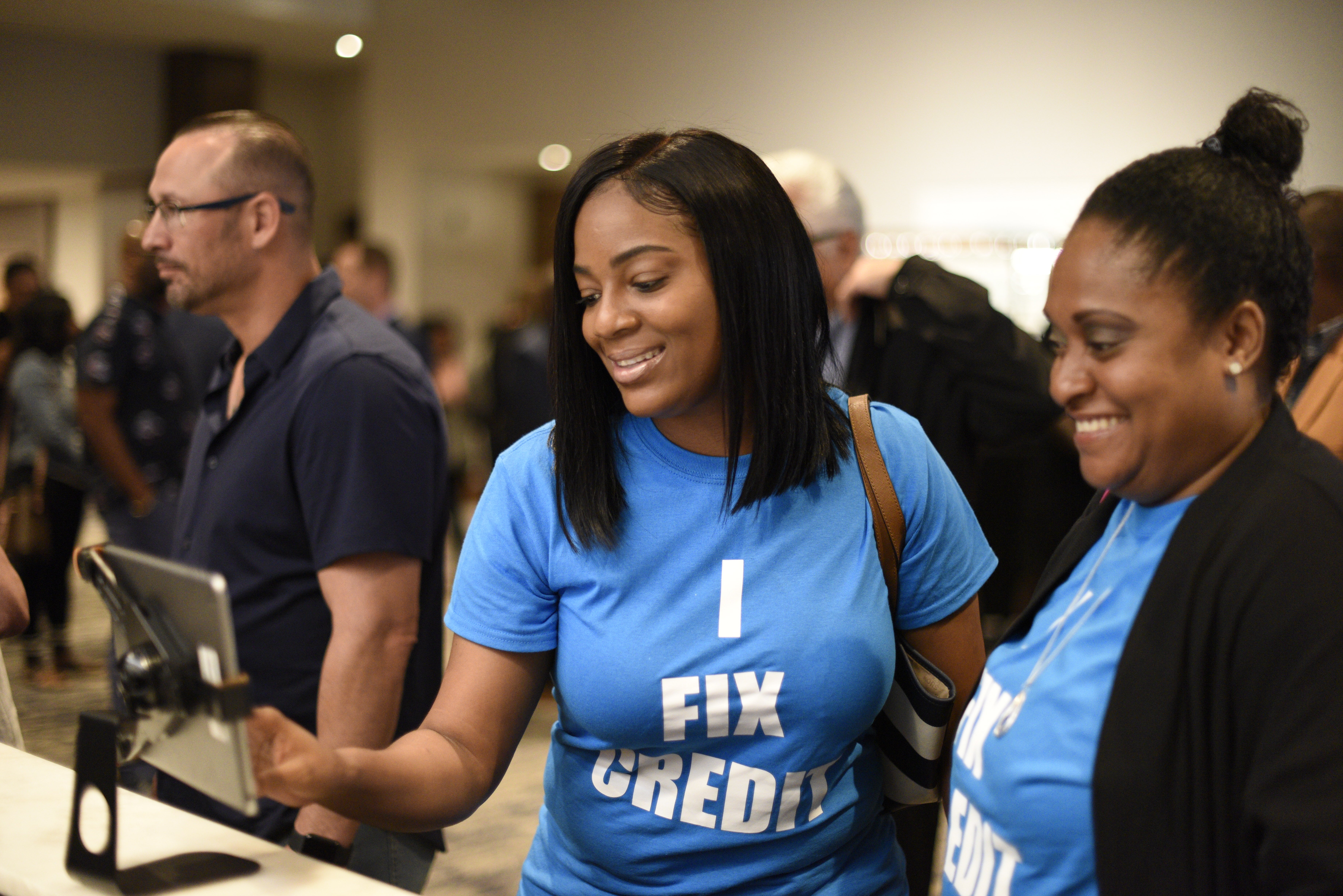We’ve all been there — a late payment from an account you’d forgotten about dragging down your score.
But fear not! Today I’ll be introducing you to a handy tool in your credit repair toolbox: the goodwill letter.
Think of it like a polite plea to a creditor. You're basically saying "Hey, I messed up, but I've learned from it and my record has been spotless since. Can we wipe the slate clean?"

Goodwill letters aren't magic bullets, but they can be surprisingly effective. Let's dive in and explore exactly how they work.
To make it a bit easier follow, I’ve broken this blog into a few sections:
- What is a goodwill letter?
- When should a goodwill letter be used?
- Do goodwill letters work?
- How to write a goodwill letter
- Goodwill letter sample & template
By the end of this article, you’ll know everything you need to know about goodwill letters, and how you can use them to repair your credit.
What is a Goodwill Letter?
Your credit report is essentially your financial report card. A late payment here, or a missed credit card bill there will act like bad grades, dragging down your overall score. This makes it harder to qualify for loans or get better interest rates.
A goodwill letter is your chance to plead your case for a second chance.
It's a formal document sent directly to a creditor (like a bank or credit card company) that specifically targets a negative item on your report. This could be a late payment, a charge-off (when a creditor writes off a debt as uncollectible), or even a repossession.
In this letter, you explain what led to the negative mark happening. Was it a one-time mistake due to job loss, unexpected medical bills, or simply youthful ignorance?
You should be honest and concise, taking responsibility for your actions. But don't dwell on the past. The key strength of a goodwill letter lies in showcasing your positive credit behavior since the incident.
Ultimately, the letter is a polite request for the creditor to remove the negative mark from your credit report entirely. It's based on the concept of ‘goodwill’ — asking for forgiveness and a chance to rebuild your credit.
When Should a Goodwill Letter Be Used?
Goodwill letters are a powerful tool, but best used in specific situations. Here are some prime opportunities to consider using one:
-
Isolated Incident: Did you miss a single payment due to a one-time event like a medical emergency or a lost bill while moving house? A goodwill letter explaining the situation can be very persuasive. Creditors are more receptive when the negative mark is isolated and not indicative of a larger pattern.
-
Factual Errors: Mistakes happen. So if you discover an incorrect entry on your credit report (such as a late payment that you can prove you made on time), a goodwill letter can be a great way to bring it to the creditor's attention and request a correction.
-
Special Circumstances: Life throws curveballs. Job loss, a serious illness, or a natural disaster can lead to missed payments. A goodwill letter explaining these circumstances can get sympathy from the creditor.
-
Recent Positive Credit History: This is crucial. Goodwill letters work best when paired with a demonstrably improved credit history. Show the creditor a consistent record of on-time payments, increased credit limits, or a debt consolidation plan you're actively following. This signals that you've learned from your past mistakes and are a responsible borrower.
With that said, there are also times when a goodwill letter might not be your best option:
-
Multiple Negative Marks: If your credit report is riddled with late payments or charge-offs, a goodwill letter is unlikely to work. Consider disputing inaccurate information or working with a credit repair specialist to develop a broader credit repair strategy.
-
Recent Negative Events: Don't rush into writing a letter if the negative mark is very recent. Give the creditor some time to update their records and see a consistent pattern of positive behavior before making your request.
Do Goodwill Letters Work?
As I mentioned in the intro, goodwill letters can be effective, but there’s no guarantee they’ll work.
Success rates vary depending on the creditor, your credit history, and the specific circumstances surrounding the negative mark.
Creditors are under no obligation to honor your request, so they may simply choose to keep the negative mark regardless of your explanation
But even with uncertain odds, a goodwill letter is a relatively simple and free tool to use in your credit repair journey. The potential for a positive outcome makes it well worth the effort.
And even if the creditor doesn't remove the negative mark, they might be impressed by your initiative and responsible approach. This goodwill could translate into future benefits, like a willingness to work with you on a repayment plan for a past due account.
Ultimately, a well-written goodwill letter, combined with a strong track record of responsible credit behavior, can increase your chances of a positive response from the creditor.
Just remember — it's about presenting a compelling case for a second chance and demonstrating your commitment to financial responsibility.
How to Write a Goodwill Letter?
Writing a persuasive goodwill letter requires a strategic approach. Here's a breakdown of the key elements and structure to follow:
1. Introduction
Start with your contact information and date, and address the letter to the specific department or contact person responsible for handling credit report disputes at the creditor company.
2. Identify Yourself and Account
Clearly state your full name, date of birth, and the last four digits of your Social Security number for identification purposes. You should also mention the specific account number associated with the negative mark you're disputing.
3. Explain the Situation
Then you need to briefly explain the negative mark you're asking to be removed. Be clear and concise, but also honest about the circumstances that led to the mistake or missed payment.
If applicable, highlight any special circumstances that caused the issue, such as a medical emergency or job loss.
4. Showcase Improvement
This is the heart of your letter, where you want to elicit empathy from the reader.
Emphasize the positive steps you've taken to improve your creditworthiness since the incident. And highlight a consistent record of on-time payments for the past X number of months (at least 12 is ideal).
Mention any credit limit increases you've received or debt management plans you're actively following.
5. Request for Goodwill Adjustment
Next, you should politely request the creditor to remove the negative mark from your credit report entirely as a gesture of goodwill.
6. Closing
And finally, you should thank the creditor for their time and consideration, and provide your contact information for any questions or follow-up.
Goodwill letter sample & template
[Your Name]
[Your Address]
[Your City, State Zip Code]
[Your Social Security Number]
[Date]
Credit Department [Creditor Name] [Creditor Address]
RE: Goodwill Request to Remove Late Payment on Account [Account Number]
Dear [Creditor Name],
My name is [Your Name] and I am writing to request a goodwill adjustment on my credit report for a late payment that appears on my account ending in [last four digits of account number].
I understand that the report reflects a late payment on [date of late payment]. I take full responsibility for this mistake and apologize for any inconvenience it may have caused.
At the time of the late payment, [Briefly explain the reason for the late payment. Be honest and concise, but avoid dwelling on negativity].
Since then, I have taken significant steps to improve my financial management and ensure this doesn't happen again. I have made all subsequent payments on time for the past [Number] months and have been able to [Mention any positive credit improvements, like credit limit increases or debt management plan].
I am committed to maintaining a good credit standing and would be grateful if you would consider removing this late payment from my credit report as a gesture of goodwill.
Thank you for your time and consideration. I can be reached at [Your Phone Number] or [Your Email Address] if you require any further information.
Sincerely,
[Your Signature]
[Your Typed Name]
Alternatively, you can get your free goodwill deletion template by filling in our form here.
Frequently Asked Questions about Goodwill Letters
How long does it take to get a response to a Goodwill letter?
There's no guaranteed timeframe for a goodwill letter response, but it typically takes creditors anywhere from a few days to a month to respond.
Can a goodwill letter remove a charge off?
A goodwill letter might remove a charge-off, but it's not guaranteed and success depends on the creditor and your circumstances.
What are the differences between a Goodwill Letter and a Credit Dispute Letter
A goodwill letter requests forgiveness for a legitimate negative mark, while a dispute letter challenges the accuracy of information on your credit report.
What are the differences between a Goodwill Letter and a Pay For Delete Letter
A goodwill letter asks for removal out of kindness, while a pay for delete offers payment in exchange for removal.
How often do goodwill letters to creditors work?
While success rates aren't tracked, goodwill letters can be surprisingly effective with strong cases and a creditor's goodwill.












